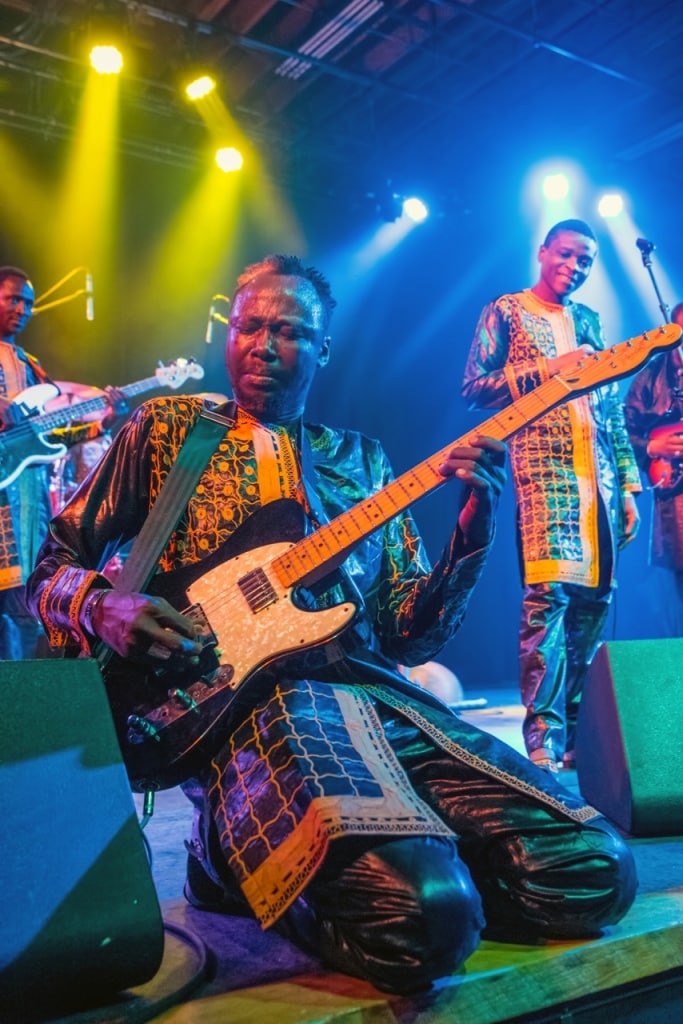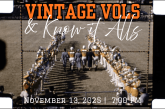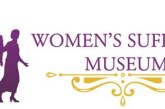How Big Ears became Knoxville’s most anticipated music event
NO FLUKE: Interview with Founder Ashley Capps • Artist Profile: Caroline Williams, author of ‘Lucy Negro Redux’ • Into the Rabbit Hole • BLANK’S BIG EARS ARTIST GUIDE • FILM Guide • Pilot Light • Tickets • Schedule

It’s maybe the most unlikely event to ever become a whopping success in Knoxville.
Founded in 2009 by AC Entertainment, Big Ears brought a diverse lineup of cutting-edge music artists to the city – artists who generally only performed in major cities in the United States and Europe. In certain years, the festival celebrated the music of modern classical pioneers like Philip Glass, Steve Reich and John Luther Adams, electronic great Terry Riley and hard-to-classify rock and pop acts, including Antony and the Johnsons, Wilco and The National. In between these acts seemed to be a little bit of everything, as long as it wasn’t quite in the mainstream.
Ashley Capps, founder and figurehead of the event, as well as being co-founder of Bonnaroo, in Manchester, Tennessee, says Big Ears’ success has exceeded anything he’d imagined.
“It seems like there’s more of a buzz about it this year than ever before,” says Capps, over lunch at the Tomato Head. “Ticket sales are way up. We’re up maybe 20 to 25 percent of where we were this time last year, and last year was the biggest year, ever.”
There was a moment when it seemed like Big Ears was a fluke. The first two years, 2009 and 2010, were lauded by critics, including New York Times writer Ben Ratliff who called the first Big Ears a music lover’s “heaven” and Rolling Stone, which the following year called Big Ears “arguably the classiest, most diverse festival in the country.”
The festival was not a moneymaker, though, and when particular plans for shows in 2011 fell through, the event went on hiatus. Three years later, with funding and encouragement from the Aslan Foundation, Big Ears returned with similar critical success and larger, more enthusiastic crowds. Now a nonprofit, the event is one of the premier events in the city and in the fine art world. Capps counts music fans and artists from more than two dozen countries at any given year.
Artists sometimes plan certain events just for the festival or know that events could certainly find a home there.

“The exciting thing about the festival is how it’s been embraced by artists as a great platform to present their work,” says Capps. “I think the reason for that is we break a lot of molds. We certainly break the mold of the traditional rock, bluegrass, jazz festival. But we also break the fine arts mold, too. By presenting this unique gathering of different types of music and different artists, it really breaks down barriers and gives them an opportunity to engage a larger and different audience that might not otherwise encounter their work.”
And, often, artists are taken aback by just how enthusiastic audiences are. Looks of surprise in the faces of performers is common.
“The feedback that I’ve gotten from the artists and composers who have been here is a real sense of almost awe and gratitude at how engaged the audience was,” says Capps. “And how attentive and committed they were to the experience.”
The festival setup allows for audience members to come and go at will. However, most seem to commit to a certain show and stay from start to finish.
“Think about [jazz/modern classical composer/performer] Anthony Braxton on a Friday afternoon at the Bijou and it’s packed and there are still people in line.” says Capps. “That music is not easy listening, and I don’t think anyone left. That was a revelation even to me. It really spoke to the openness of the audience.”
While Braxton’s show could be abrasive, many of the Big Ears shows are easy on the ears. That is one of the harder things to convey for a festival that’s been called “avant-garde.”
“I think, originally, people were intimidated by it because it was kind of branded the ‘weird music festival,’” says Capps. “Most of the music isn’t really weird or even avant-garde. This year you have Bela Fleck, the Punch Brothers, Spiritualized, Kim Kashkashian playing Bach’s cello suites arranged for viola. I think the most avant-garde thing about the festival is the different types of music presented under the festival banner in a single weekend. It’s that unlikely combination that makes it a bit of a head-scratcher. But you could just go see all the bluegrass bands and have a great bluegrass festival or all the jazz bands and have a great jazz festival. In reality, if you were to do that, you’d see some really great music.”
Capps says planning for each year’s festival blends into the next because some artists’ schedules can’t be worked in one year, but they’re kept in mind for the next. Capps says sometimes a show is signed on sight-unseen.
“The ballet with Rhiannon Giddens and the Nashville Ballet [“Lucy Negro Redux”] … Rhiannon started telling me about that before last year’s Big Ears and it just sounded so fascinating and intriguing that we signed on very early for that just based on the concept and the faith that there was such a strong idea that the work was going to be so amazing, which, indeed, it is.”
Capps says Big Ears may continue to grow, but, he says, it’s important to keep the audience size low enough so that music fans have the best experience they can have. Already there are shows that reach capacity and everyone who wants in can’t get in.
“One of the questions we’re often asking ourselves is how do we grow it without losing the intimacy and the character or it,” says Capps.”
The festival also continues to branch out with more free shows at the Knoxville Museum of Art and organizers look for opportunities to involve more local musicians. This year’s shows at Pilot Light feature several local acts and members of Knoxville Symphony Orchestra will perform with singer-songwriter-guitarist Richard Thompson and in the show “Triptych: Eyes of One on Another.”
Capps hopes in the future the festival can begin commissioning works to be premiered during the festival and to expand the film and visual arts aspects of it.
“I’m very committed to it,” says Capps. “To me, as a music fan as well as a festival producer it’s kind of a pinch me experience in the sense that you can never fully be prepared for what the response for something is going to be until you launch it. The response to this has far exceeded anything I had dreamed of. I’m very energized and excited and almost feel like it’s a responsibility to see what it could become.
NO FLUKE: Interview with Founder Ashley Capps • Artist Profile: Caroline Williams, author of ‘Lucy Negro Redux’ • Into the Rabbit Hole • BLANK’S BIG EARS ARTIST GUIDE • FILM Guide • Pilot Light • Tickets • Schedule
Check here for BLANK’s coverage of the 2018 BIG EARS Festival








